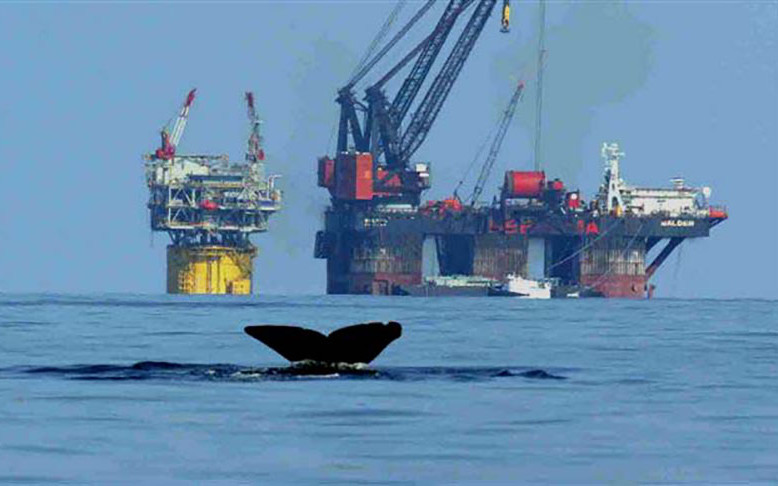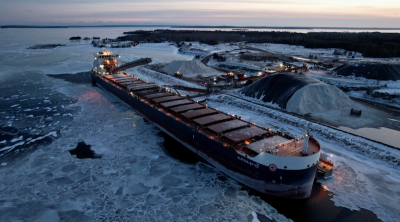President Biden issued sweeping orders Monday to remove areas of the eastern Gulf of Mexico, northern Bering Sea and the entire Pacific and Atlantic coastal waters from consideration for future oil and gas leasing.
With two weeks left in his presidency, Biden exercised authority under the Outer Continental Shelf Lands Act of 1953, which allows a president to withdraw areas from consideration for future leasing.
“My decision reflects what coastal communities, businesses, and beachgoers have known for a long time: that drilling off these coasts could cause irreversible damage to places we hold dear and is unnecessary to meet our nation’s energy needs,” Biden said in announcing the withdrawal of over 625 million acres.
“It is not worth the risks. As the climate crisis continues to threaten communities across the country and we are transitioning to a clean energy economy, now is the time to protect these coasts for our children and grandchildren.”
Biden’s maneuvers prompted complaints from the offshore industry – and plaudits from environmental groups.
“The decision to unilaterally block areas from future offshore oil and gas development is a strategic error, driven not by science or voter mandate, but by political motives,” said Erik Milito, president of National Ocean Industries Association. “This move directly undermines American energy consumers and jeopardizes the vast benefits tied to a thriving domestic energy sector.”
Biden’s order is “contributing to the bipartisan tradition of protecting our coasts,” said Joseph Gordon of the environmental group Oceana. “Americans have been calling for these protections for decades, and Oceana applauds President Biden for building on the legacy of Democratic and Republican presidents protecting our coasts from offshore drilling.”
President-elect Donald Trump’s future press secretary Karoline Leavitt denounced Biden’s order on social media.
“This is a disgraceful decision designed to exact political revenge on the American people who gave President Trump a mandate to increase drilling and lower gas prices,” wrote Leavitt. “Rest assured, Joe Biden will fail, and we will drill, baby, drill.”

But it could be legally difficult to reverse the withdrawals. Former president Barack Obama similarly made a late-term move to block some Alaska waters. The Obama decision was sustained in federal court in 2019, despite a challenge from the Trump administration then.
In late 2020 then-president Trump himself extended a 2012 ban on drilling in Southeast offshore areas for political reasons as he ran for re-election during the last moths of his first term. Trump’s move then extended the ban to June 2032; Biden’s order would make it permanent.
At the time, the industry saw it as a shocking reversal after Trump’s “drill, baby drill” campaign rhetoric. But two years earlier, the Trump administration had suddenly reversed course on opening the eastern Gulf of Mexico to drilling – a long-sought goal of the offshore industry.
Despite Trump’s previous moves to broaden offshore exploration, backing off on the eastern Gulf was seen as a political favor to Florida’s then-Gov. Rick Scott, who was preparing to run for the U.S. Senate as his governor’s term drew to a close. It’s likely that Florida Republicans, protective of their state’s coastal tourism and real estate industries, will continue to oppose new oil leasing as a future environmental threat.
The Washington Post reported Jan. 4 that Sen. Mike Lee, R-Utah, slated to be chairman of the Senate Energy and Natural Resources Committee, could try to overturn Biden’s orders through the Congressional Review Act, seeking majority votes in the Republican-controlled Congress to nullify an executive action within the next 60 days.
But with Republicans holding only a slim majority – and longstanding, bipartisan opposition to drilling among lawmakers from coastal states – completely overturning the ban would be a challenge.
Specifically, the new Biden order covers:
The entire eastern U.S. Atlantic coast and the Eastern Gulf of Mexico, in all about 334 million acres of the Atlantic Outer Continental Shelf from Canada to the southern tip of Florida, and the Eastern Gulf of Mexico.
There are no active oil and natural gas leases in Federal waters off the eastern Atlantic coast.
The southeast U.S. section withdrawal matches a previous Congressional withdrawal enacted by the Gulf of Mexico Energy Security Act of 2006, and makes permanent Trump's 2020 extension.
The Pacific Coast along California, Oregon, and Washington, some 250 million acres off the West Coast. California has had a moratorium on issuing new leases in its state waters since a disastrous 1969 oil spill near Santa Barbara. The last federal oil and gas lease sale in the area was withdrawn off southern California in 1984.
An area of the Northern Bering Sea in Alaska, setting aside 44 million acres where there are no existing oil and gas leases. The “Northern Bering Sea Climate Resilience Area” was established in 2016, and “includes one of the largest marine mammal migrations in the world – beluga and bowhead whales, walruses, and seals travel the funnel of the Bering Strait each year to feed and breed in the Arctic,” according to a White House statement Monday.
“This is an area where oil and gas development would pose severe dangers to coastal communities, and where the health of these waters is critically important to food security and to the culture of more than 70 coastal Tribes, including the Yup’ik, Cup’ik, and Inupiaq people who have relied on these resources for millennia. The Alaskan Congressional delegation has opposed previous proposals to allow oil and gas leasing and drilling in the area.”



.png.small.400x400.png)

